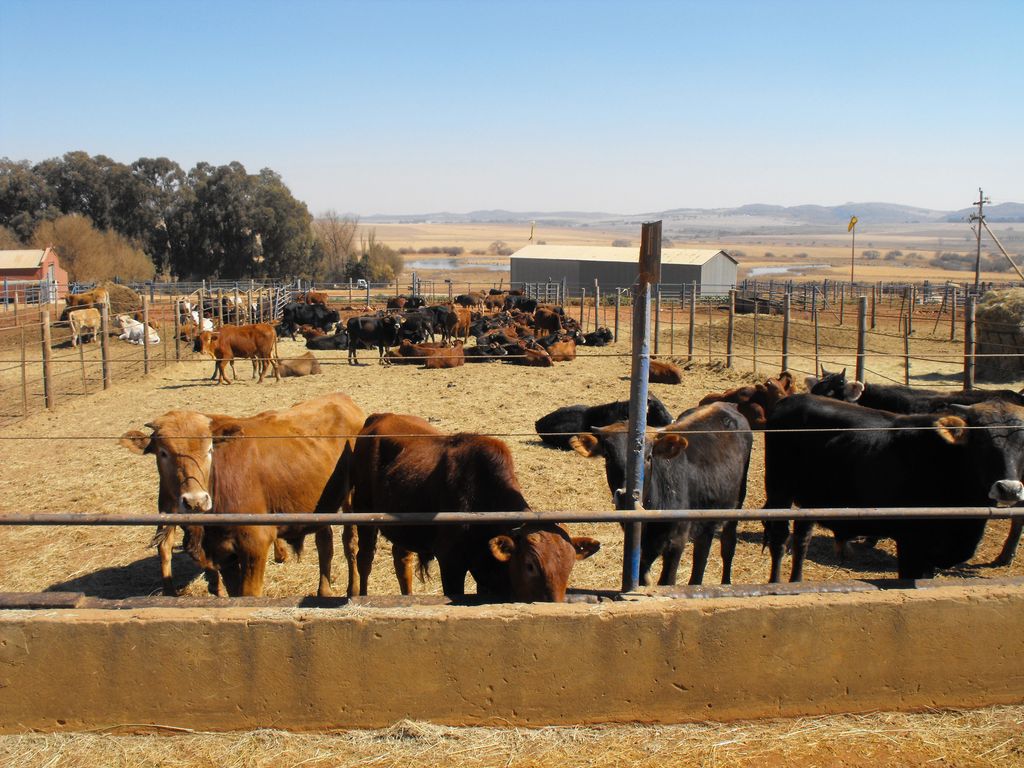Project
Costs of mitigating greenhouse gas emissions in in crop and beef production

Development of cost of production for alternative production systems and management practices in agriculture
Crop and cattle production contribute to the global greenhouse gas (GHG) emissions. What are the economic impacts of GHG-mitigation in agricultural farms?
Background and Objective
Agriculture has been identified as a contributor to global GHG emissions. In crop production nitrous oxides from fertilizer applications as well as methane emissions from wet rice production are most relevant, whereas in livestock production methane emissions from enteric fermentation of ruminants are in the focus. Production systems with relatively low productivity, as they are often found in developing and emerging countries, appear to have a particular high potential to reduce GHG emissions.
Studies on mitigation of GHG often focus on technical aspects but ignore the economic implications of such interventions. As a consequence, this project will evaluate GHG-mitigation strategies in selected countries in Asia, South America, Africa from a production system and an economic perspective.
Approach
The following working steps were achieved:
- Specification of the reference situation (baseline), quantification of the production system in terms of their performance, productivity, economics and GHG emissions
- Identification and specification of mitigation strategies (jointly with the local research partners, advisors and producers; quantification of the alternative production systems in terms of their performance, productivity, economics and GHG-emissions
- Comparison of the baseline with the mitigation scenarios
- Reporting
Data and Methods
The following countries and products are investigated:
Crop: Viet Nam (rice), Indonesia (palm oil), China (corn)
Cattle: Argentina (Cow-calf and finishing), Colombia (finishing), Morocco (finishing)
The project will use the methods and the data bases of the agri benchmark Cash Crop Network as well as the agri benchmark Beef and Sheep Network. The specification of data sets takes place with the local agri benchmark research partners. Data are processed with the farm-level models TIPI-CAL and TYPI-CROP. Existing GHG-calculation tools and methods are used, but their coverage is improved within the scope of the project.
Results
Beef production
- The focus of the alternative practices for beef farms is increasing animal productivity in terms of daily weight gain (DWG). In Argentina, two alternative practices (silage and feedlot) were identified in place of a mainly grazing-based system of cow-calf and beef finishing on pasture (the baseline). The Colombian baseline situation represents a traditional, extensive cattle grazing system with degraded pasture quality and a relatively low stocking rate. Silvopastoral production systems (SPS) in Colombia have demonstrated the potential to increase cattle productivity while making an efficient use of natural resources. In Morocco, instead of the traditional subsistence production system (2 heads of local breeds per farm), two mitigation options have been adopted based on the genetic improvement of local breeds and improved feeding practices. The more productive breeds are Piedmontese X local breed and Charolais X Holstein.
- The introduced scenarios in all three case studies illustrated notable increases in DWG (by about 50%, 100% and 80% for the Argentinean, Colombian and Moroccan scenarios, respectively) compared to relevant baselines. Thus, by improving physical productivity, the alternative practices reduced emissions on a per 100 kg meat sold.
- Except the feedlot scenario in Argentina, all scenarios generated lower emissions for each 100 kg of meat added. The higher GHG emission in the Argentinean feedlot is mainly due to the backgrounding interval on pasture where animals are kept as long as there is surplus grass before finishing them in the feedlots. So, the animals enter the feedlot at relatively high age with a relatively low weight.
Crop production
- The alternative practices for the crop farms vary: for palm oil, various by-products (empty fruit bunches (EFB) and palm oil mill effluent (POME) from the milling process are -recycled to partially substitute synthetic fertilizer; which also diverts these by-products from conventional waste treatments that release large amounts of methane and nitrous oxide. For corn, reduced nitrogen application, less intensive tillage practices and better residue management are found to reduce soil emissions and improve soil quality and fertility. Finally, in the paddy rice system, alternative water management systems are thought to reduce methane emissions while not sacrificing yields.
- In the case of Vietnam and China, the yields are assumed to be the same as the baseline. In reality though growers in both Vietnam and China may indeed experience a decrease in yields during the transition period of changing practices, but we assume that after 2-3 years of adopting the new practices, the yields would stabilize to their previous level. While the three scenarios in the Indonesian case study can reduce input and application costs of synthetic fertilizers, they also imply significant transport, application and processing costs (particularly investments costs, in the case of producing large-scale EFB+POME compost). In the case studies in China and Indonesia, total costs are similar for most of the scenarios and the baseline, which means hypothetically it’s economically possible for farmers to change their practices to reduce the on-field emissions. In the case of Vietnam, costs increase with alternative wetting and drying water management and a drum seeder because of the additional field activities, which shows up as cash costs.
- The greatest GHG saving comes from averted methane emissions created during the palm oil mill wastewater treatment. For corn, reduced nitrogen input, less intensive tillage practices and better residue management reduce N2O and soil carbon emissions and may improve soil quality and fertility. Finally, in paddy rice, alternative water management systems were found to reduce methane emissions compared to continuous flooding. Yet there is tradeoff in paddy rice production. Under continuous flooding, significant methane emissions are produced from constant anaerobic conditions, while relatively less N2O emissions are formed. With the alternative wetting and drying practice, CH4 emissions are reduced, but nitrous oxide emissions greatly increase. Thus, one important conclusion was the need to balance water management with timing and type of synthetic fertilizers and organic residue incorporation.
- Report by FAO is on the way and will be published in the first quarter 2018.
Thünen-Contact

Involved Thünen-Partners
Involved external Thünen-Partners
- (Bayerische) Landesanstalt für Landwirtschaft (LfL)
(Freising, Poing, Deutschland)
Funding Body
-
Food and Agriculture Organization of the United Nations (FAO)
(international, öffentlich)
Duration
12.2015 - 12.2017
More Information
Project funding number: GCP/GL0/500/GER
Project status:
finished









